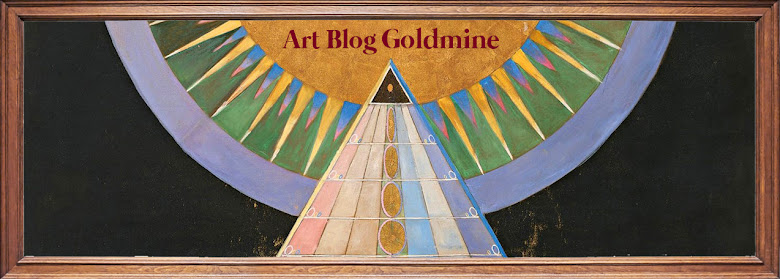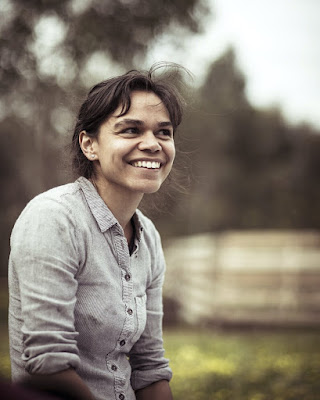Three Artists on Spotlight: Artwork and Profile
Julia Gutman
 |
| Julia Gutman, Isn’t it all just a long conversation?, 2022, Donated textiles, embroidery, chains |
The artwork, the artist's largest tableau to date, features an appalling image of impregnated women as a subject of male desire. Though not explicitly stated, the woman is likely the artist herself. She values her honor and reputation more than herself. The three women on the left side of the pregnant women confirm that one of the main themes of the artwork is desire, as they are from canonical paintings of Western art history, in which women were depicted and manipulated by the desires of men.
Julia Gutman is a multi-disciplinary artist living and working on Gadigal land. She re-uses found textiles to produce ‘patchworks’ that merge personal and collective histories to explore themes of femininity, intimacy, and memory.
Amrita Hepi
.png) | ||
| Amrita Hepi, Open Poses (detail), 2022, Dataset for pose recognition, custom software, webcam, monitors, decal, lamps, painted wall, sound |
 |
| Amrita Hepi, Open Poses, 2022, Images from dataset |
Themes
1. premise: modern society is a panopticon
To understand the artwork, knowing the premise of modern society is a must. Modern society is similar to Panopticon, a circular-shaped prison where guards at the center monitor prisoners locked in rooms built around the edge of circumference. Prison guards, people of power, are eligible of monitoring and tracking prisoners, people of lesser power. Prison guards are the few authorities who are informed of common sense, have secure necessities of life, high social standing, and wealth. Prisoners are the majority and comparatively less in power than the guards. The power structure is set according to past behaviors that reflect ethical standards. Prisoners are encouraged to obey rules set by the authority to secure their rewards and avoid punishment.
In the artwork, the artist compares guards to the viewers and a prisoner to herself and emulates the process of reducing humans as leverages for capitalist means. In a mock green screen room, viewers are invited to intimate the artist's pose displayed on the left screen. Poses represent past behaviors of the artist, a prisoner. Viewers are guards, so they can monitor her poses through the screen. There are more than 2000 images of the artist in a strange posture. When viewers match the artist's posture on screen, a photograph of viewers is taken so they can compare their pose to the original image. The newly taken photo is saved onto the existing dataset of images.
2. helplessness of the human condition in modern society
Viewers can't check whether the artist would go through the newly captured images, but she emphasizes that monitored behaviors are returned to prisoners in her artwork description. Prisoners are reduced to a state of powerlessness, as they admit they are powerless compared to the mighty authority, who is in full grasp of prisoners' data and Achilles heel.
The artist reflects the helplessness of the human condition in society by selecting a green screen as the backdrop of her images. To be used in videos of various purposes, green screens are replaced with background videos. Just as green screens are easily replaced with a background video, people are easily removed from what they are and exploited as leverage for capitalist means regardless of their will. The authority is the ultimate judge and decision-maker, and people have no choice but to helplessly accept their vulnerable position.
3. First Nations body as a subject of humiliation
The artist is First Nations choreographer and dancer from Bundjalung country (Australia) and Ngāpuhi (Aotearoa New Zealand) territories. The choreographic practice of the artwork reflects the historical constructions of First Nations identity, which have also been subjected to fetishization, and dehumanization in the Western art canon. By taking and displaying images of herself in awkward postures, the artist reinterprets her First Nations bodies as a subject of humiliation.
An award-winning artist. Hepi engages in practice concerned with
dance as a social function performed within galleries, performance
spaces, video art, and digital technologies. She engages in forms of
historical fiction and hybrid —especially those that arise under
empire— to investigate the body's relationship to personal
histories and archives. Amrita is represented by Anna Schwartz Gallery.
Katie West
 |
| Katie West, I love you my baby, you are my first born (detail), 2020-22, Found driftwood and metal, 2-channel video projection |
By documenting her actions, the artist undertakes a journey of self-realization. She informs viewers of the brutal policy of the Australian Government: removing Aboriginal infants from their parents at their birth. Then she discloses the artist's mother was forcibly taken away from her grandmother. While performing simple actions in her ancestral land, she imagines a time and place where the three generations might have all lived together. The film implies despair and intergenerational trauma of her and First Nations people, who are deprived of their culture. In this way, the artwork carries a social function — acknowledging that things are not as they should be; not as we imagine, and far from what we can hope for the experience of First Nations People in Australia.
Katie West is an artist and Yindjibarndi woman based in Noongar
Ballardong Country, working in installation, textiles, and social
practice. The process and notion of naturally dyeing fabric underpin
her practice – the rhythm of walking, gathering, bundling, boiling
up water, and infusing materials with plant matter.






